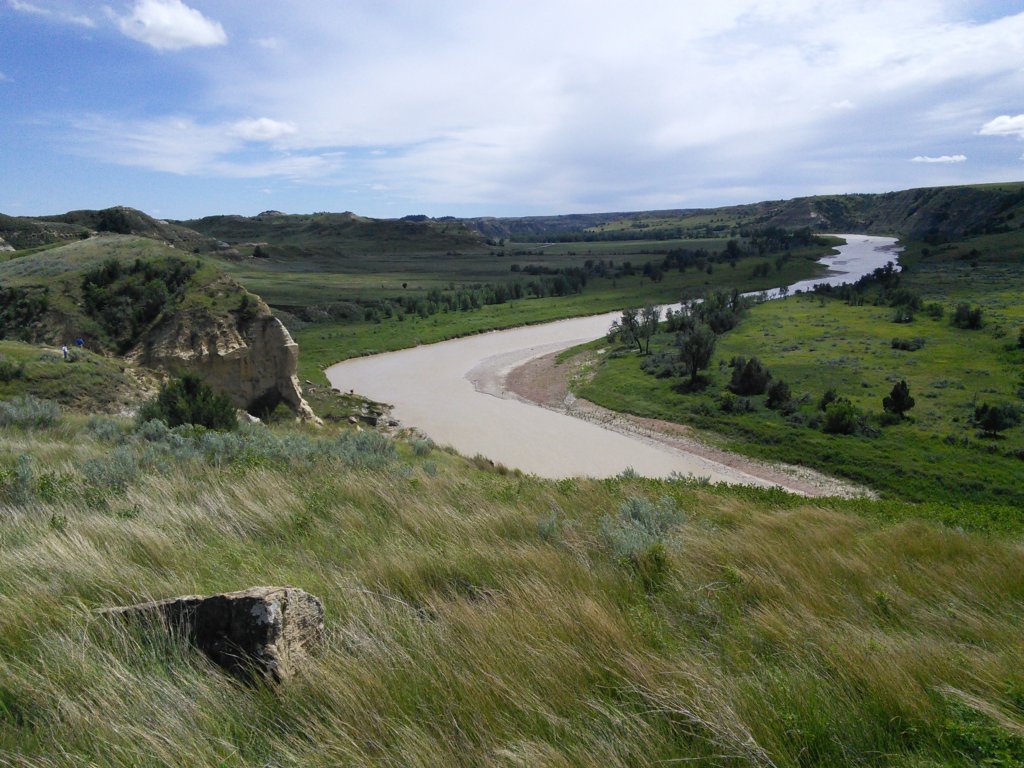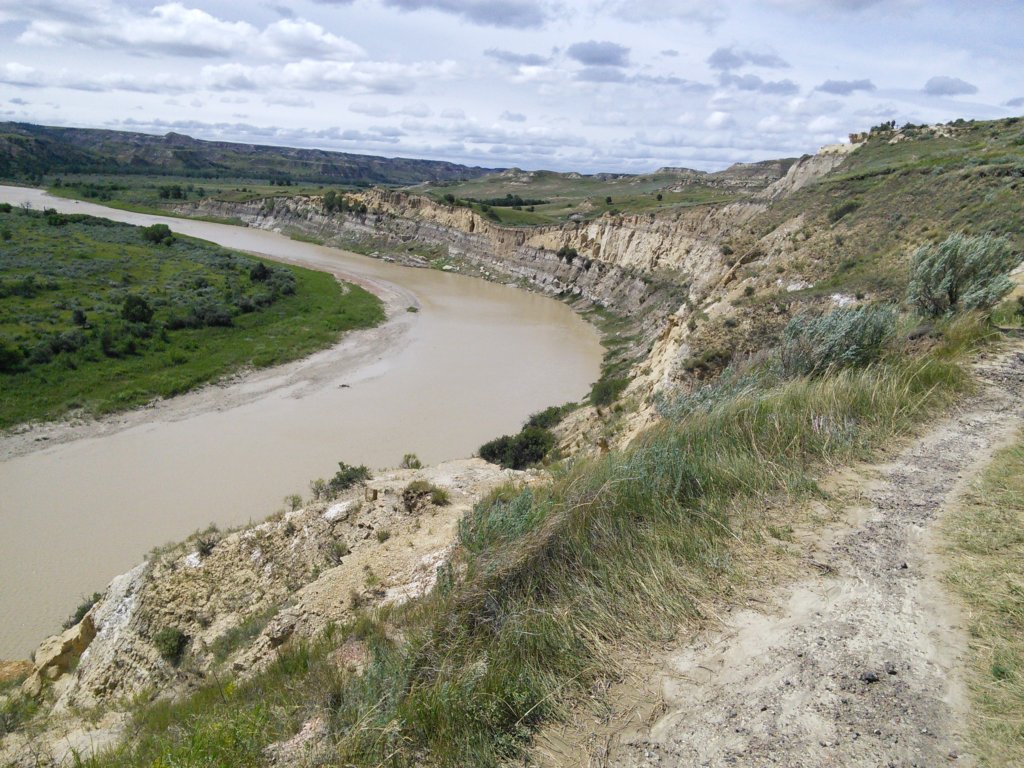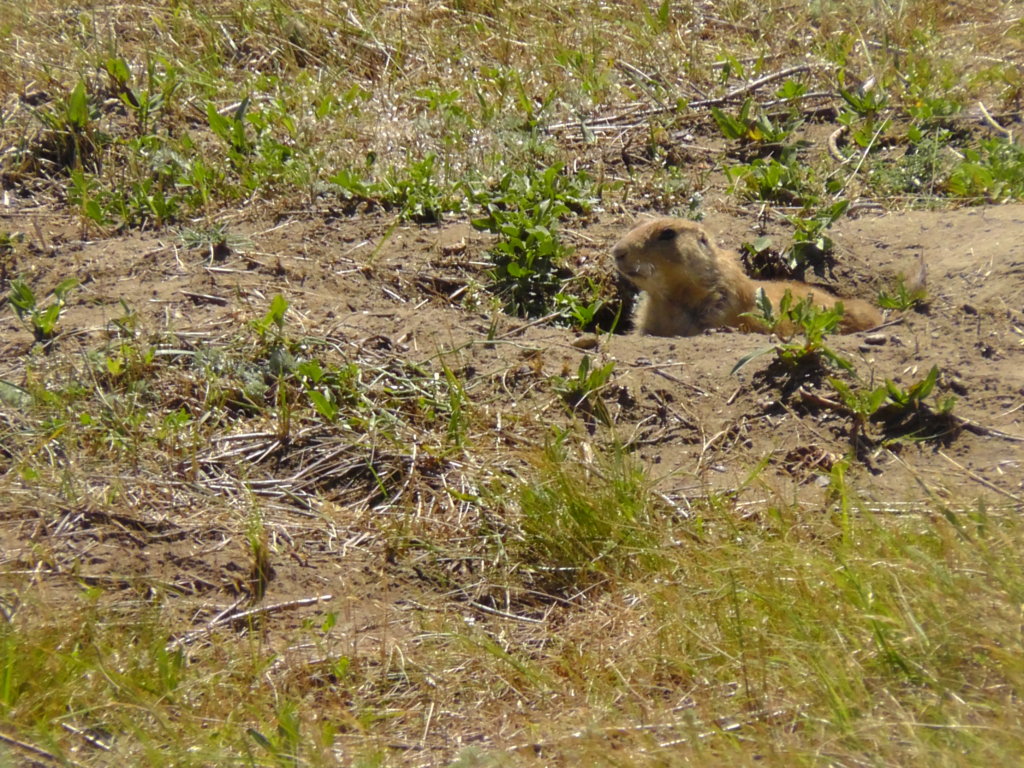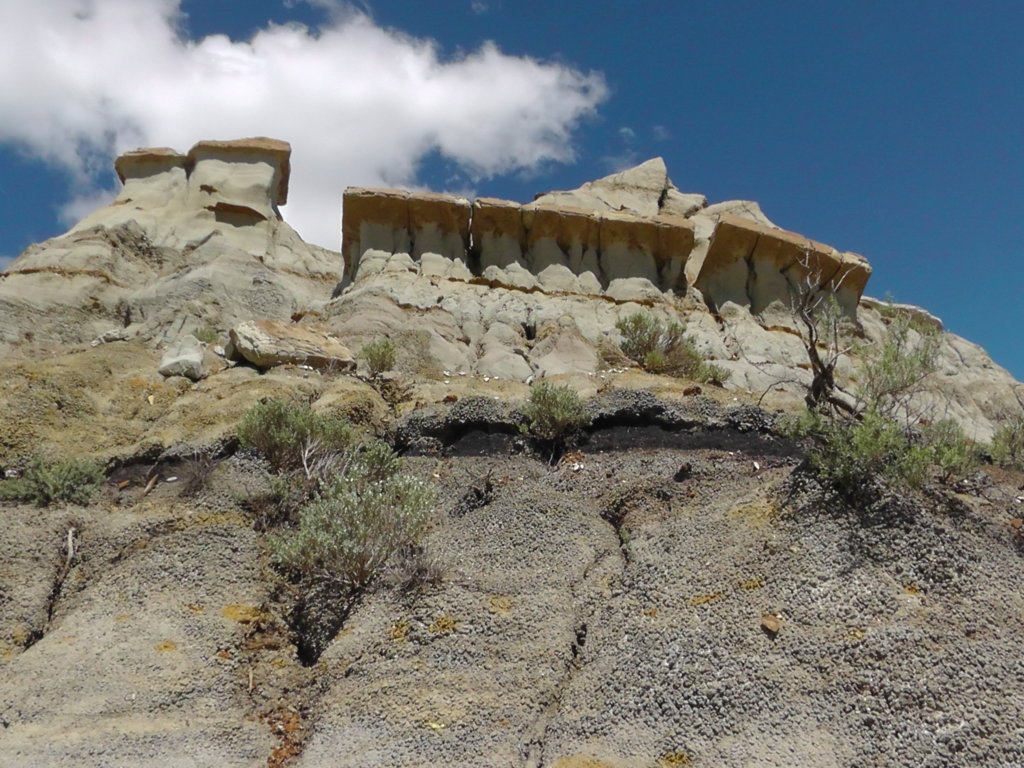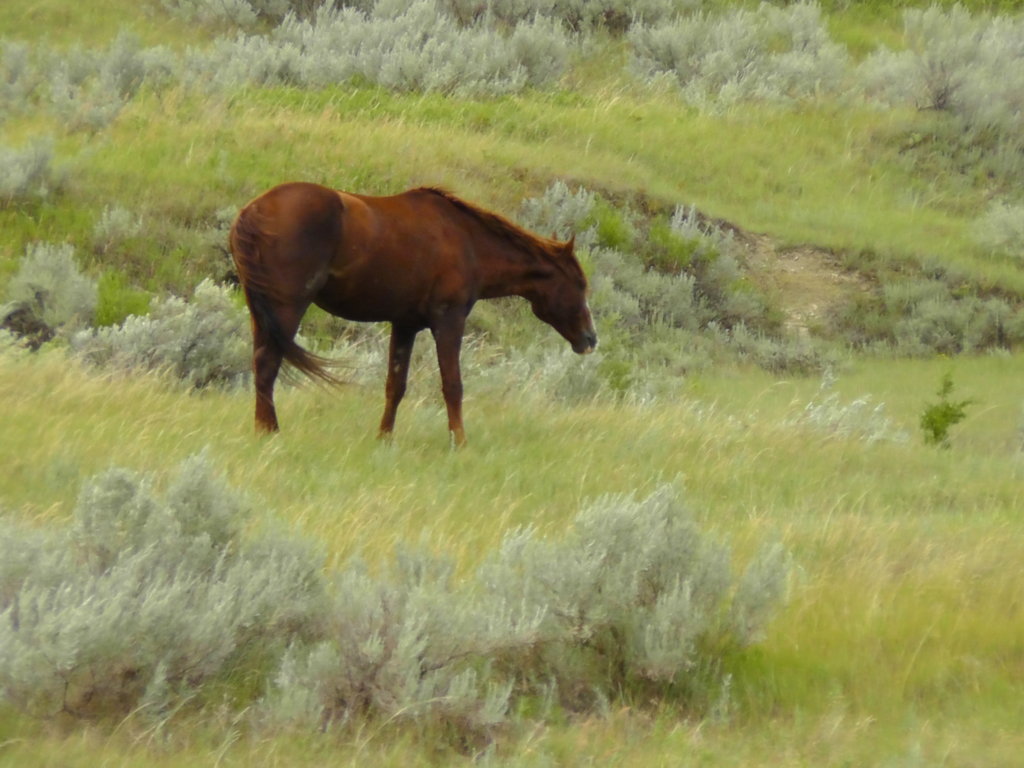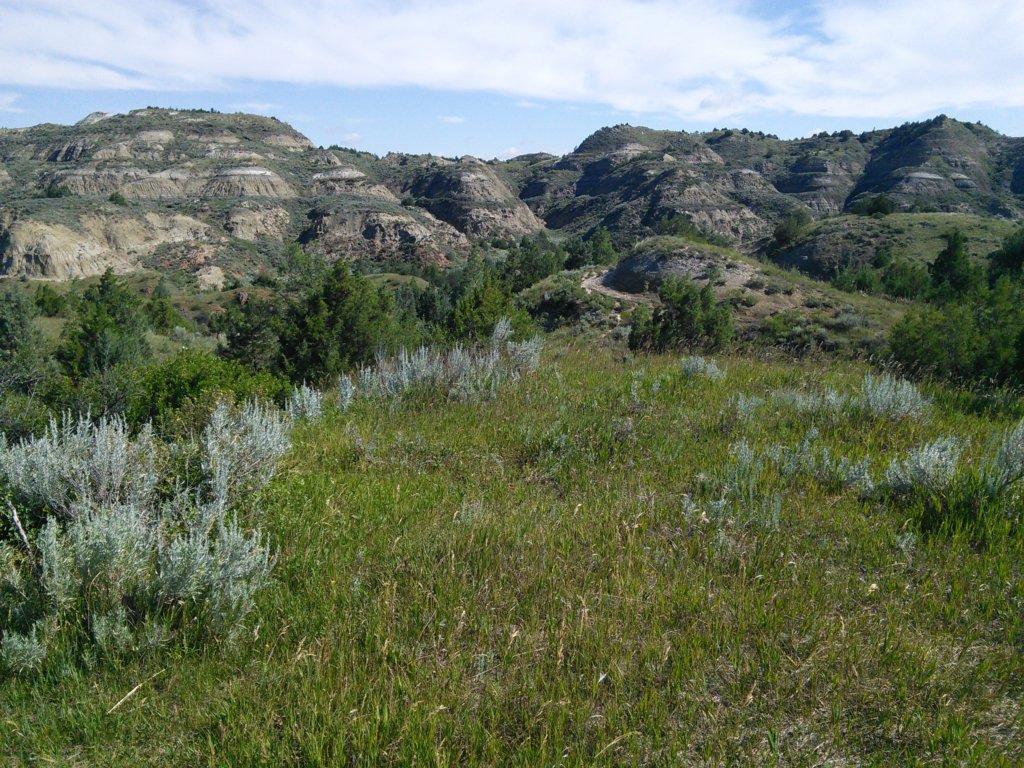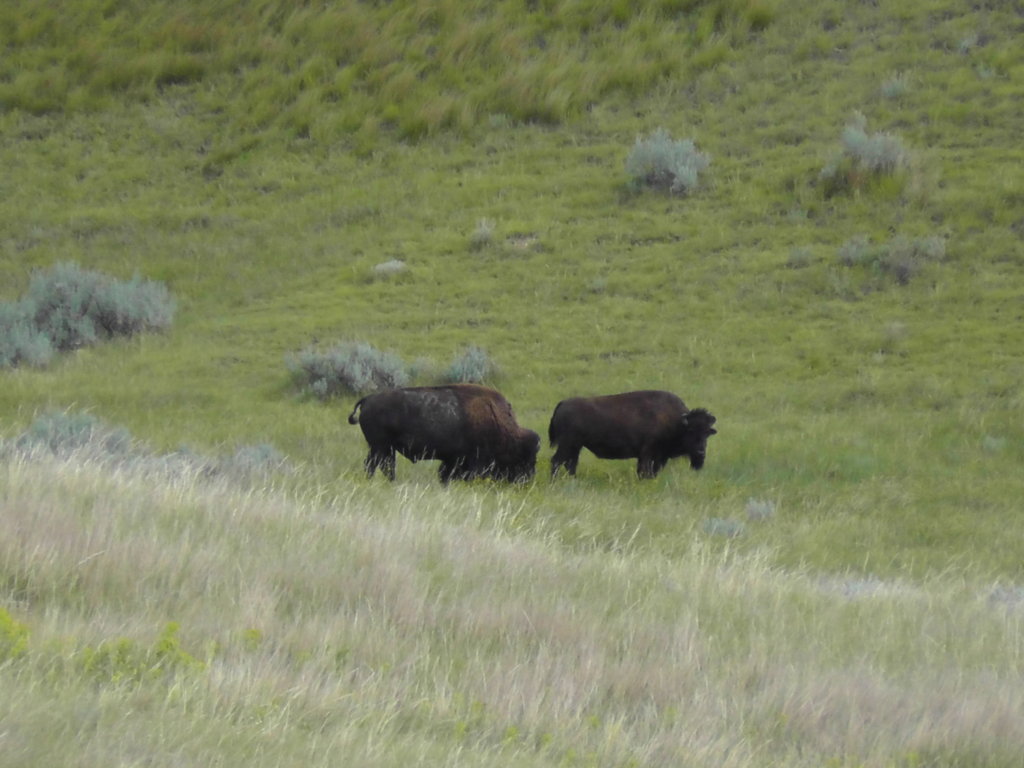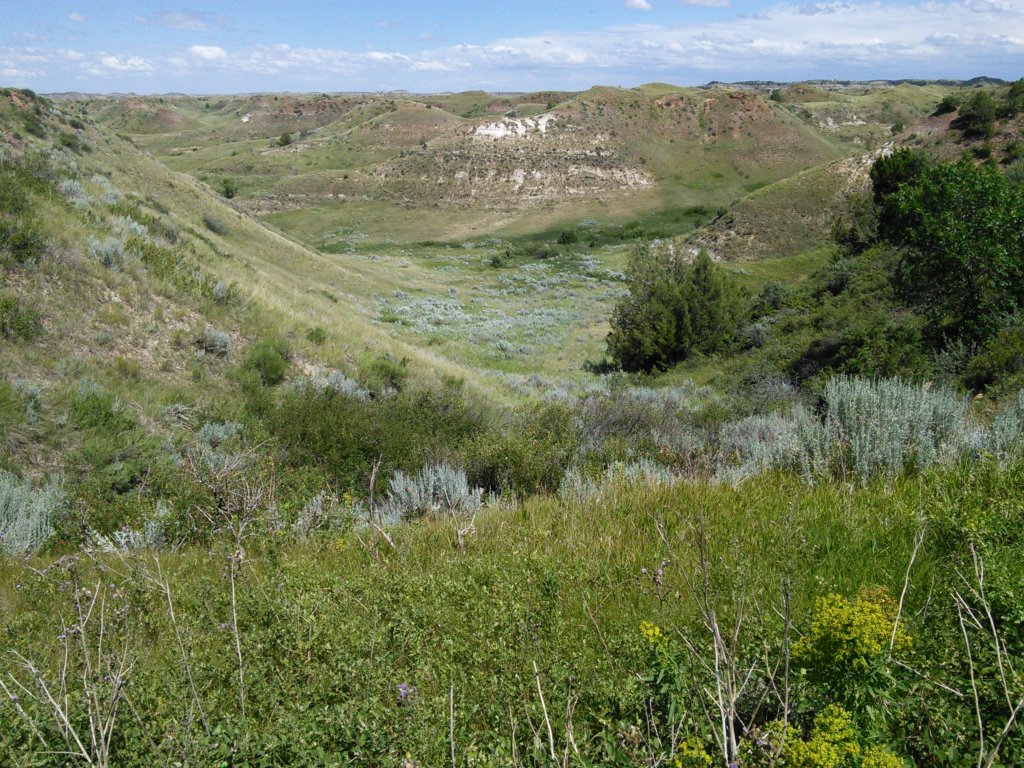The winds were a steady 40 to 50 mph the first day. The grass really did look like waves on the ocean. That night we got a ferocious thunderstorm and it shook my camper again and again. When I got up in the morning, it had moved the camper 3 inches.
Theodore Roosevelt National Park
Theodore Roosevelt National Park consists of three geographically separated areas of badlands in western North Dakota and was named for U.S. President Theodore Roosevelt. The park covers 70,446 acres of land in three sections: the North Unit, the South Unit, and the Elkhorn Ranch Unit.
The history of the North Dakota badlands, however, goes back long before Roosevelt—65 million years, to be exact. It was then that streams flowing from the newly arisen Rockies began depositing sediments here that would later be carved by the Little Missouri River and its tributaries. The results of this ongoing process of deposition and erosion are spectacular: wildly corrugated cliffs; steep, convoluted gullies; and dome-shaped hills, their layers of rock and sediment forming multicolored horizontal stripes that run for miles.
Both main units of the park have scenic drives, approximately 100 miles of foot and horse trails, wildlife viewing, and opportunities for back country hiking and camping.
One of the most popular attractions is wildlife viewing. The park is home to a wide variety of Great Plains wildlife including bison, mountain lion, feral horses, elk, bighorn sheep, white-tailed deer and mule deer, prairie dogs, and at least 186 species of birds including golden eagles, sharp-tailed grouse, and wild turkeys.
A major feature of the South Unit is the Scenic Loop Drive. Pullouts and interpretive signs explain park features and allow visitors to enjoy scenic views and wildlife along this paved 36-mile.
